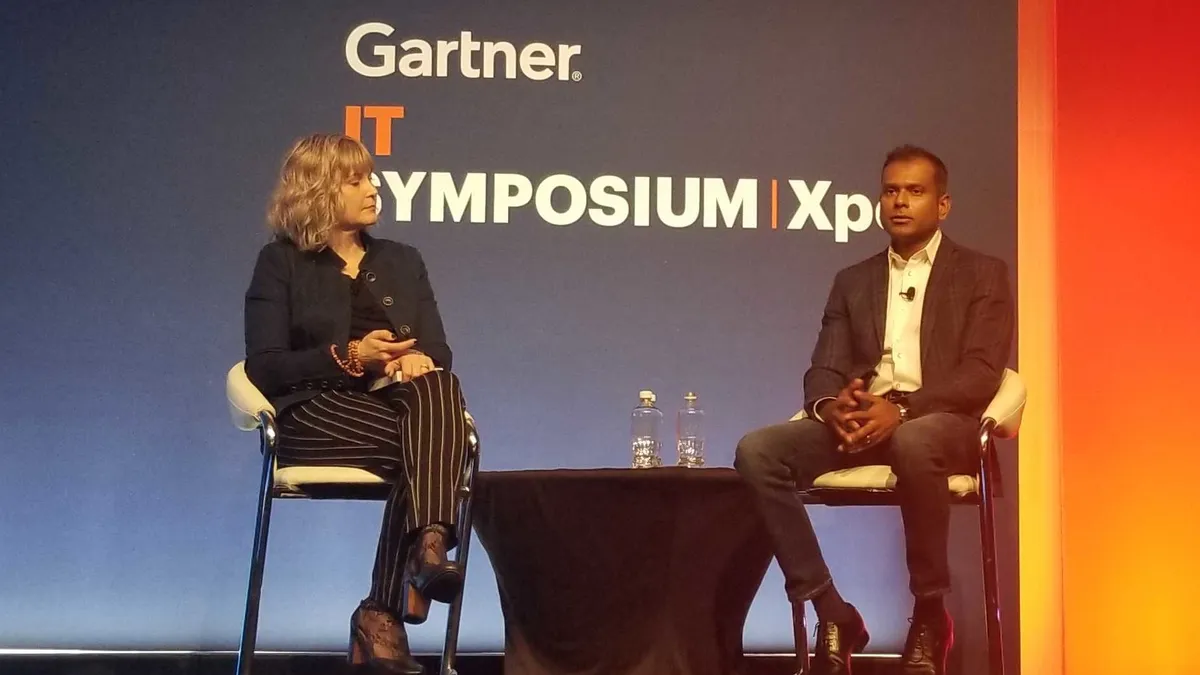ORLANDO, Fla. — Few hotel experiences are as frustrating for weary travelers as finding themselves standing, suitcase in hand, in front of a room door that won't open.
Often, dead batteries inside the lock mechanism are to blame for rogue hotel doors. Fixing them is a time-consuming process that requires dispatching a technician to manually tether to the lock, identify what's causing the issue, update the device's firmware and swap out the dead batteries.
But through a combination of cloud computing and proprietary hardware, the hospitality company can remotely monitor when a battery is about to fail, and quickly swap them out before guests show up. A digital chipset in the door connects to a cloud-enabled in-room device, which lets managers catch and fix the problem.
"Such a simple use case, but has a profound effect on user experience," said Naveen Manga, VP of Customer Journey Technology and Delivery at Hilton, speaking last week at the Gartner IT Symposium/Xpo in Orlando, Florida.
The improvement on the room lock is one component of a broader concept Hilton's been working on since late 2017 under the moniker Connected Room.
Essentially, the hotel chain is digitizing control of a series of components inside the room, bringing them all together through a mobile app. Its capabilities include in-room entertainment options to ordering a ride or food delivery.
"We want to make the app a command center for the room," said Manga. Inside the room, a proprietary in-room appliance can speak to IoT devices and communicates with the Hilton Honors program backend. On top of that sits a "mission control" application that gives operators access to actionable data.
Initially, Hilton looked at off-the-shelf solutions for that in-room device. But no direct-to-consumer options that could integrate with the company's backend made sense from a financial standpoint at Hilton's scale. The company needed a product they could implement at their almost 6,000 hotels in 117 countries and territories.
"So we made a decision to build it from the ground up," Manga said. "A proprietary device gives us more control. It lets us have a better, deeper integration."
According to Manga, the Connected Room concept has now been rolled out to 32 Hilton properties. Depending on its size, updating a property takes between one to five days.
Much like the retail industry or biopharma sector, companies in the hospitality industry are tasked with adapting to fundamental shifts in business and consumer culture. For Hilton, the transition to the digital age means using tech to smooth out pain points and increasing guest satisfaction.
"What do we need to be talking about? What is the next disruption in our industry? How do bend the arc of disruption in our favor?" asked Manga. "We came up with the notion of giving guests more control, and connected room was right in the center of that."
Aside from operational improvements like the room lock fix, the concept also lets the company tailor customer experience to follow guests as they travel through different destinations.
Guests who check into a hotel in Memphis and mark a TV show as their favorite will find that show ready for them at their next stay in New York or Washington, for example. Hilton expects the Connected Room concept to keep expanding its reach across more aspects of the hotel stay.
Editor's note: This story has been updated with more recent statistics on Hilton and its Connected Room concept. Additional language has been included to clarify how long it takes to deploy the Connected Room concept in a new property.












